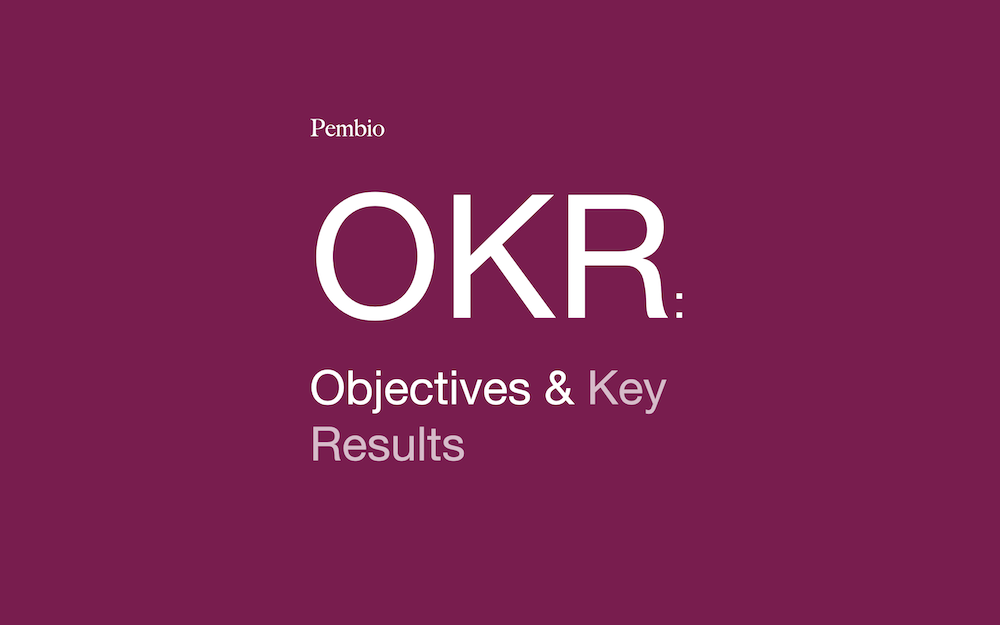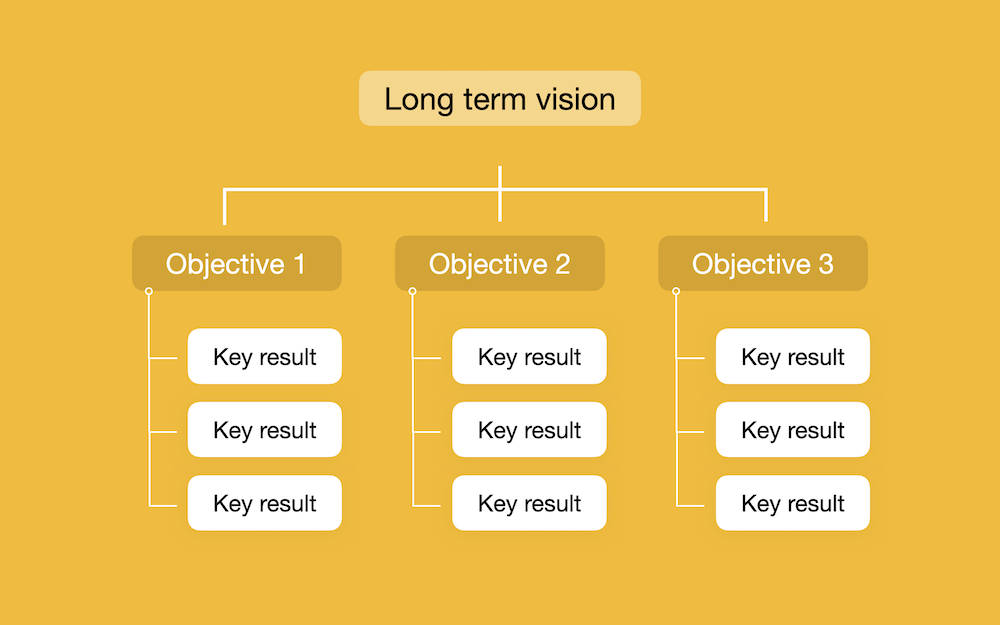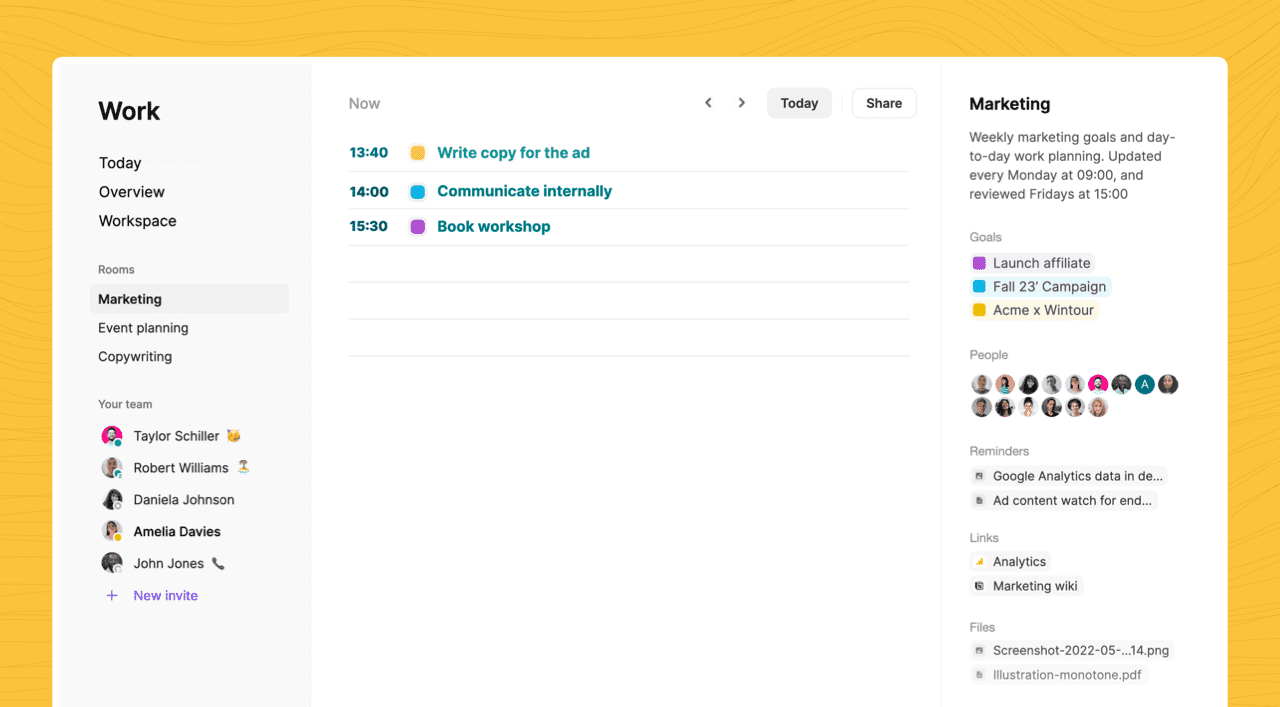Pembio
A curated collection of resources, worksheets and templates within the productivity space.
Get the app ✌️OKR's - A guide on how to set OKR's and how to cascade them.
Have you thought about what makes some businesses successful and others not? What really separates successful organizations from others?
Out of hundreds of different factors, there is one that stands out. It turns out that successful teams and organizations have clear goals and continuously ensure that they move in the direction of these.
However, having a clear goal is not enough either. The goal needs to be broken down, made measurable and followed up in order to continuously ensure that you move towards it.

The OKR framework
The OKR framework was originally designed by Andy Grove who based it on the work of Peter Drucker. He, in turn, is now regarded as an important inventor of modern management techniques, and created "MBO" or "Management by Objectives". OKR was popularized by venture capitalist John Doerr who also worked at Intel, and he coined the term OKR after hearing Grove lecture on the system.
After leaving Intel, Doerr introduced the OKR framework to a small start-up company called Google, where it became an important tool that contributed to the development of one of the world's most successful companies.
Google was lucky enough to be introduced to OKR already when there were around thirty employees. With an amazing collection of talent, it was seen that you needed clear, measurable and aggressive goals to rally around to keep the team focused and working in the same direction. In the rearview mirror, Google's founders have said that OKR was a key in the growth journey that then took off and Google's implementation was the starting point for the method's explosive growth in the last decade.
What is an OKR?
The basis of OKR is as simple as a few objectives and associated key results. Often they are grouped so that you have 3-4 objectives and each objective has 3-5 associated key results.
The difference between an objective and a key result can be described in a simple formula: We will (Objective) which we measure with (key results).
An objective is therefore a goal that points out a direction, while a key result is something measurable that gives us a clear indication whether we have achieved our goal or not. A rule of thumb is that if all key results belonging to an objective are met, then our objective is as well.

Objectives & Key Results
Well-formulated OKRs have incredible power in themselves. They inspire while showing the way to actually reach unimagined heights. They are also a strong expression of the organization they come from, which can be seen in the words used together with the content of the goals.
An organization signals a lot by having, for example, sustainability as a strategic objective (Climate Neutral 2023) or why not the customer experience at the center (The industry's most satisfied customers). In other organizations, innovation (Leading R&D in our industry) or sales (dominating our segment) may be the focus.
When setting OKRs, it can be powerful to imagine a future where you have delivered the maximum on all your key results belonging to an objective.
When you as a team have set all your OKRs, you can ask yourself the question 'if the business continues as usual and the team achieves all these results - is it possible and have we made the absolute maximum of our potential this period?'. If the answer is yes to these questions, then you have found an appropriate level of ambition.
How to cascade OKR's
Cascading OKRs is a top-down driven approach allowing companies to ensure that all (or select) parts of the organisation drives in the specific direction set by management. In his seminal work “Measure What Matters” John Doerr explains that cascading OKRs makes “an operation more coherent”, which means that top level decision-makers set the strategic direction and that teams and departments further down in the company adopt OKRs based on the OKRs defined higher up in the organisation.
Cascading OKRs through different levels of the organisation thus enables management teams to ensure complete alignment between what individual teams and departments are doing on a daily basis and the overarching strategic direction of the company. John Doerr uses the following example of cascading OKRs at an electric car dealership to provide additional guidance:
Management level OKR
O: Become the leading electric car dealership in the region.
KR1: Makeup 60 percent of all-electric car sales in the region.
KR2: Reach 90 percent in customer satisfaction for servicing and maintenance operations.
KR3: …
Sales Manager OKR
O: Make up 60 percent of all-electric car sales in the region. (same as Management’s KR1)
KR1: Hire 2 new sales associates.
KR2: Increase the number of cars sold by 55 percent over the last year.
KR3: ...
Sales Associate’s OKR
O: Increase the number of cars sold by 55 percent over the last year. (same as Sales Manager’s KR2)
KR1: Speak to at least 50 potential customers a month.
KR2: Successfully close at least 12 sales a month.
Why we think OKR are a great goal setting method
There are tons of benefits getting a structure around your goal setting, and using a framework like OKR increases your chances of success. Below are a couple of reasons we at Pembio think OKR’s are great.
- The structure is simple. There is not much formality, which makes it easier for everyone to get involved. The most important thing of all is that there are goals and that you work with them, not how they are formulated.
- The effort to get started is small. A workshop is enough to develop the goals and it doesn't have to be a big effort to work goals into your usual process.
- The goals must be updated continuously, which means that you practice and get better and better at working with goals.
- The company has goals in the same format, which makes it easier to understand and work towards the company's goals.
- Other teams also have goals in the same format, it facilitates communication between teams and you can be inspired by how other teams work with their OKRs.
By: Johan Flodgren

The goal planning app that will skyrocket your productivity
A brand new productivity app - empowering you, or your entire team, to get the most important work done with stunningly simple goal planning.
Get started for free